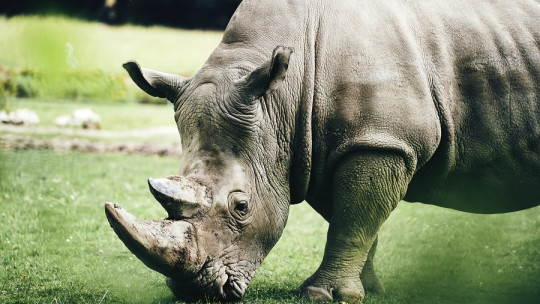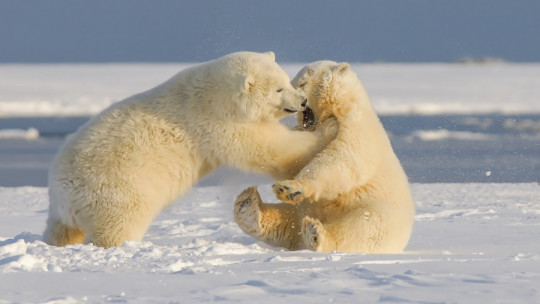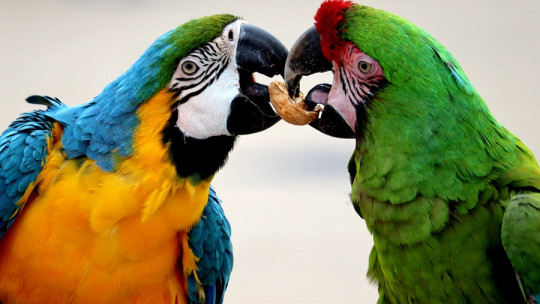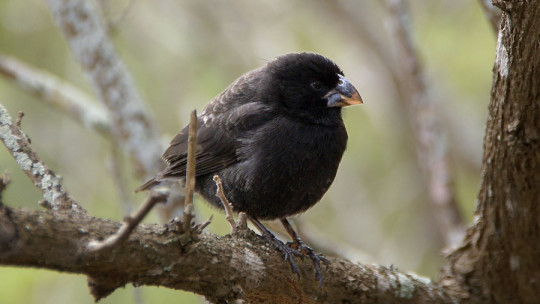Natural selection bases its evolutionary mechanism on a specific key concept: all living beings have the first and last goal of reproducing, since leaving a genetic mark on future generations is always more important than the individual’s own life.
All species present on the planet operate under this dogma (except humans), since survival, existence itself, is only conceived as the time interval between reproductive episodes. An animal does not exist because it enjoys it (at least as far as we know), but rather it maximizes its permanence on Earth solely in order to leave more offspring.
These initial concepts make clear to us the importance of reproduction in nature, but do you know what types exist in the animal, plant and microscopic world? Do you know to what extent animals give their lives for their offspring? Let’s see what they are the types of reproduction of living beings well we assure you that some evolutionary strategies will surprise you.
Types of reproduction: living by and for offspring
We can define reproduction, in a general way, as a biological process that allows the creation of new living beings from one or more parents , in order to perpetuate its lineage over time. We are facing a primal phenomenon, so much so that, until now, there is no living being in natural conditions that does not reproduce in some way.
From an evolutionary point of view, reproduction promotes various behavioral and physiological mechanisms in living beings, for example, sexual selection (a variant of natural selection) drives competition between individuals of the same species to achieve the chimera of any living being: leave your genetic mark on subsequent generations
Below we will see the different types of reproduction divided into two blocks (sexual and asexual), with specific examples and their evolutionary implications. Let’s go there.
1. Asexual reproduction
Asexual reproduction is one in which a living being is produced from a single cell or a group of cells. From a more general point of view, we can define it as the most “basic” reproduction, since in general does not require specialized cells (gametes) In most cases, a mother cell gives rise to two or more daughter cells. It’s that simple. Next, we present the different events included within asexual reproduction.
1.1 Binary fission
Beings as primal as bacteria and archaea carry it out. In this case, the DNA of the progenitor cell is duplicated and its cytoplasm divides in order to give rise to two identical daughter cells.
1.2 Budding
We are facing a concept similar to the previous one, but in this case, the division is unequal This reproductive mechanism is based on the emergence of prominences in the parent organism which, with the necessary time and growth, give rise to autonomous entities that can separate from the parent organism (or remain attached to it). An example of this is the species Hydra oligactis, a hydrozoan measuring a few millimeters with tentacles.
1.3 Sporulation
Typical of some fungi and bacteria In these cases, spores are generated (whether unicellular or multicellular) that can be released into the environment and that, inside, contain the genetic information necessary to give rise to a new individual.
1.4 Fragmentation
We are facing a fascinating case, since the parent can divide into segments and, from these, autonomous descendants arise These body excisions can occur accidentally (architomy) or spontaneously (paratomy). Planarians and various starfish exhibit this type of reproduction, for example.
1.5 Polyembryony
We are entering more complex terrain, and therefore, from now on we will observe these types of reproduction in groups of vertebrates, among other living beings. Polyembryony is the first reproduction mechanism that we are going to see that does require sexual cells (although it is a partially asexual reproduction method).
In this case, two or more embryos develop from a single zygote Strictly speaking, this process requires a sexual component (since the zygote is produced by the fertilization of an egg), but later, it divides asexually. Single twins in humans are a clear example of this process.
1.6 Parthenogenesis
Parthenogenesis is the last form of asexual reproduction, in which An egg gives rise to a fully functional living being without the need for prior fertilization Species such as the lizard Cnemidophorus neomexicanus are composed only of parthenogenetic females, since they do not require males to produce offspring.
2. Sexual reproduction
sexual reproduction It necessarily involves syngamy, that is, the fusion of male and female gametes to produce a zygote from which an embryo will develop.
Unlike the opposite case, in this phenomenon the progeny is a result of the combination of the genetic information of the father and the mother, since a diploid cell has a double number of chromosomes (2n), where one comes from the mother’s egg ( n) and another from the father’s sperm (n). The key to sexual reproduction is, therefore, the genetic variability of the offspring.
In general, types of sexual reproduction are not usually distinguished in the same way as in the asexual variant, but according to the morphological characteristics of the gametes, we can see two different variants. We will tell you about them below.
2.1 Isogamy
The two gametes that join to give rise to the zygote are exactly the same in structure, size and internal physiology For this reason, a distinction cannot be made between “female gamete” and “male gamete.” It is typical of some plants, fungi and protozoa.
2.2 Anisogamy
It is the typical and most widespread sexual reproduction There are two gametes of different shape and size (an egg and a sperm) that will give rise to the zygote through the fertilization process.
Differential keys at an evolutionary level
Beyond a classifying criterion, we are going to allow ourselves to close this space with a series of biological digressions that, of course, are of utmost importance to understand the reason for the variability of reproductive strategies on Earth.
Asexual reproduction is certainly simpler than sexual reproduction: it is quick and simple , since specialized sex cells do not have to be produced (in most cases). On the other hand, a single individual can give rise to completely functional offspring, that is, it does not require energy expenditure to find and court another conspecific. Of course, it would make sense for all living beings to opt for it, right?
Although it cannot be verified experimentally and explaining the origin of sex is extremely complex, its maintenance in the evolution of living beings can be explained, in part, by the need for adaptation. Sexual selection is clearly biased, since the individuals that reproduce are the fittest and, therefore, they will provide their advantageous characteristics to subsequent generations.
Thus, a series of characters that have emerged as independent mutations in various living beings can end up joining together into one after several generations through this mechanism. Of course, the intrinsic objective of this process is to increase the biological fitness of the species, accumulating beneficial mutations and discarding deleterious ones.
Besides all this, Sexual reproduction allows for enormous genetic variation at the individual level, promoting greater adaptability in the face of various environmental changes at the population level.
As clear as all this may seem, explaining long-term maintenance of sex is a real puzzle. This is because, despite the genetic benefits that this entails, the generations of asexual individuals grow much faster and can also present genetic mutations (even if recombination does not occur). This, in a theoretical framework, would make asexual reproduction always “win” from a resource optimization point of view.
Furthermore, if asexual reproduction were truly deleterious due to the lack of genetic variability that it entails, why do there still exist species that have practiced it for thousands of years, which have not become extinct? Of course, providing an inalienable answer regarding this issue is, today, an impossible task.
Summary
As we have seen in these lines, reproduction contains an exciting world of terms, considerations and evolutionary hypotheses that dazzle professionals from ethologists to the general population. Sex and offspring are the very engine of life and therefore, all living beings adapt and act accordingly to this primal need throughout their life cycles.









